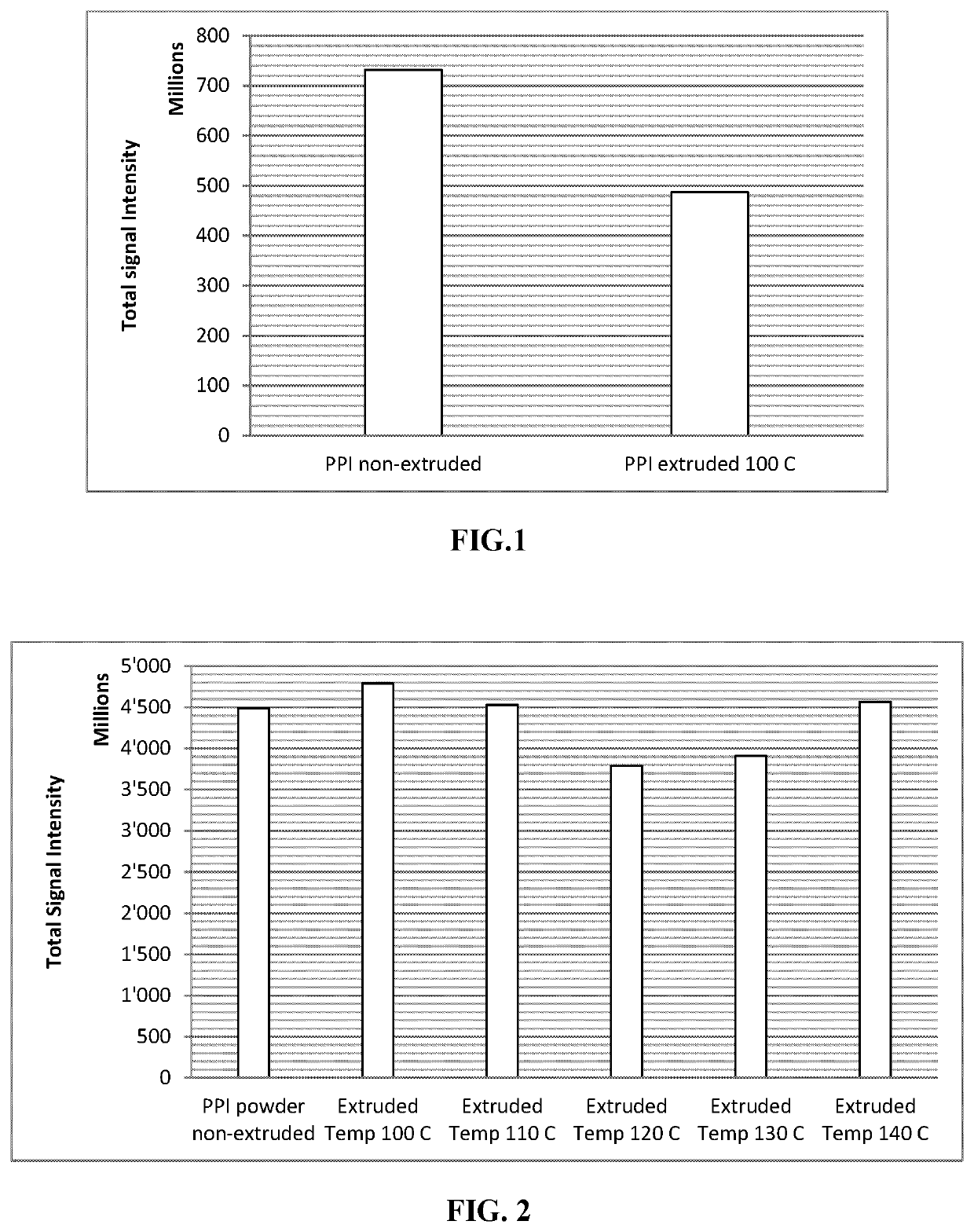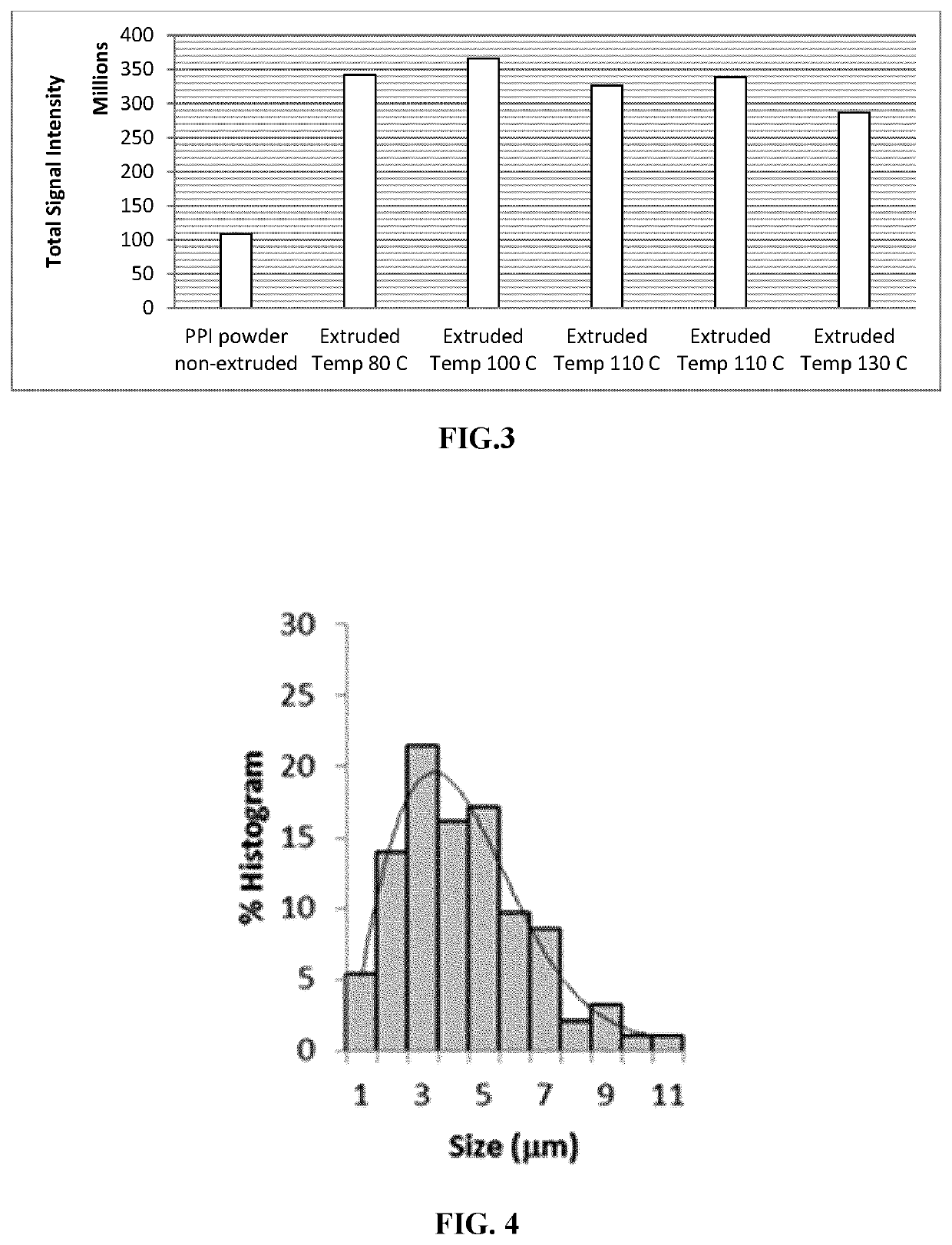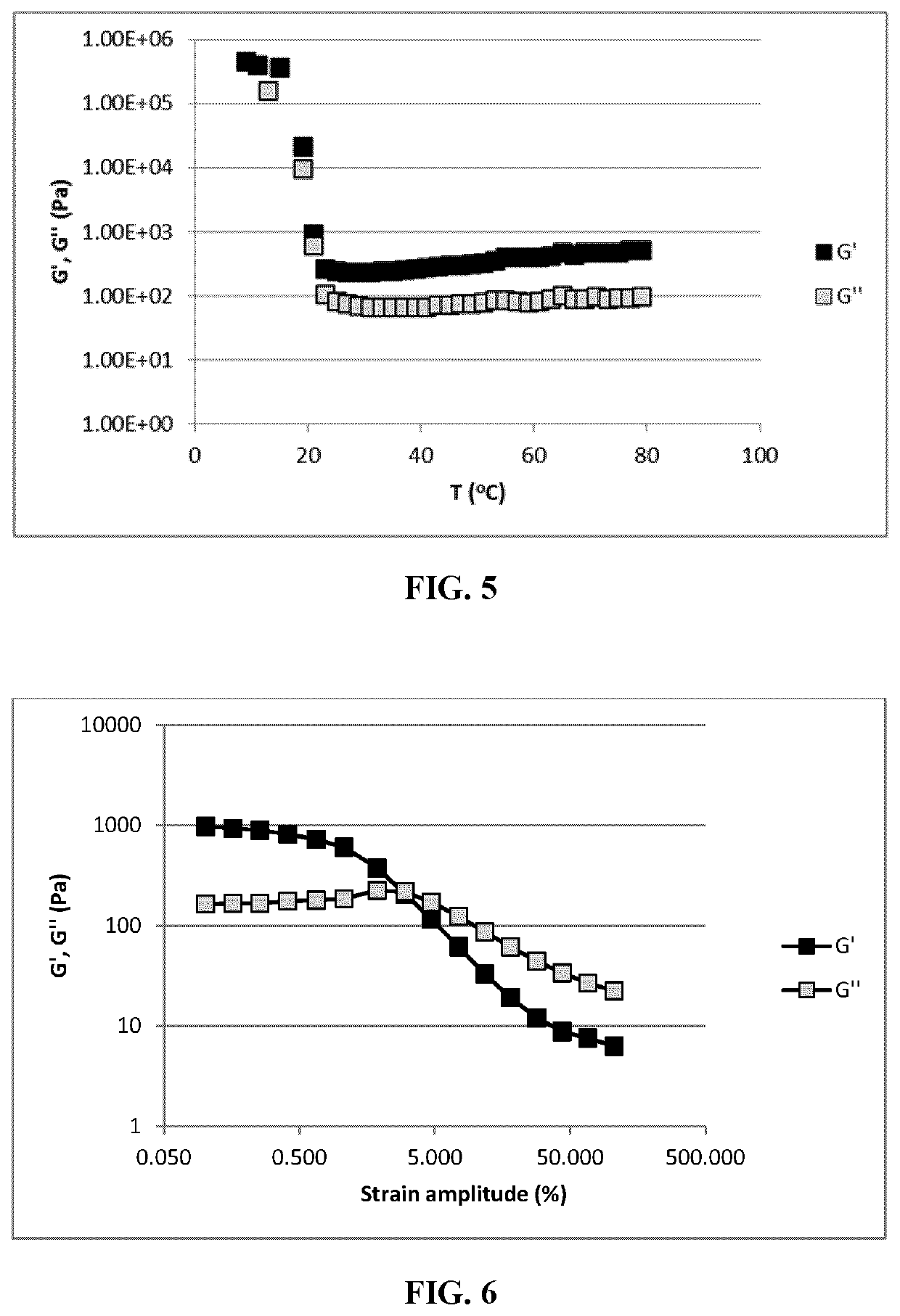Fat blends, emulsions thereof, and related uses
a technology applied in the field of fat blends and emulsions of fat blends, can solve the problems of reducing the efficiency of meat production, affecting human health and well-being, and concomitant increase in greenhouse gas emissions, so as to reduce the binding of lipophilic flavor compounds and increase log p values
- Summary
- Abstract
- Description
- Claims
- Application Information
AI Technical Summary
Benefits of technology
Problems solved by technology
Method used
Image
Examples
example 1
Preparation of a Water-In-Oil Emulsion Comprising a Flavor Composition in the Dispersed Phase
[0130]A quantity of 143 g of an edible oil (MCT oil, see Table 1) was heated to a temperature of 100° C. in a reaction vessel placed in a hot water bath. 14.2 g of a solid fat particles F (Hydrogenated Soy Oil) were added to the heated oil phase, thereby melting the particles.
[0131]9.6 g of a 50:50 w / w an emulsifier blend of Dimodan HP and Citrem Liq K was added to this heated oil mixture phase 0 (continuous phase). All these steps were performed while stirring with an impeller stirrer at a slow stirring speed of 100 rpm.
[0132]An aqueous droplet phase A (Fatty Juicy Flavor (water soluble flavor)) was separately pre-heated to a temperature of 80° C., avoiding boiling. The stirring speed of the impeller stirrer was then increased to 3000 rpm and 33.4 g of the water phase A was added an approximate addition rate of 2 milliliters per second, thereby emulsifying the water droplets phase A into th...
example 2
Preparation of an Emulsion Flavor Ingredients Comprising Flavor Compositions in Dispersed and Continuous Phases
[0136]The emulsifiers (Citrem and Lecithin see table 2 hereunder) were mixed in an equal quantity of Sunflower oil (an edible oil) and heated to 65-70° C. to melt and dissolve. The remaining continuous Sunflower Oil and Cocoa Butter (solid fat particles F) are heated to 55° C. in a Thermomix at 100 rpm to melt and combine. The dissolved emulsifiers were then added to the bulk oils.
[0137]The two oil soluble flavors (Pork Fat Type Thermal Reaction Flavor from Firmenich and the Pork Sausage Type Liquid Flavor from Firmenich) were then added and dispersed in the oil continuous phase.
[0138]Setting the Thermomix to 300 rpm the water soluble flavor (Fatty Juicy Flavor aqueous phase) is gradually added to the oil phase in a continuous stream (approx. 100 g per minute) in order to achieve a fine dispersion and emulsification.
[0139]The emulsion is then transferred to a cooling vessel...
example 3
Example 3 Formulation Used in Model of Extruded Food Products:
[0140]Pork Fat Type Thermal Reaction Flavor (Oil soluble flavor) (Firmenich) 0.2% as consumed.
PUM
| Property | Measurement | Unit |
|---|---|---|
| melting point | aaaaa | aaaaa |
| melting point | aaaaa | aaaaa |
| melting point | aaaaa | aaaaa |
Abstract
Description
Claims
Application Information
 Login to View More
Login to View More - R&D
- Intellectual Property
- Life Sciences
- Materials
- Tech Scout
- Unparalleled Data Quality
- Higher Quality Content
- 60% Fewer Hallucinations
Browse by: Latest US Patents, China's latest patents, Technical Efficacy Thesaurus, Application Domain, Technology Topic, Popular Technical Reports.
© 2025 PatSnap. All rights reserved.Legal|Privacy policy|Modern Slavery Act Transparency Statement|Sitemap|About US| Contact US: help@patsnap.com



